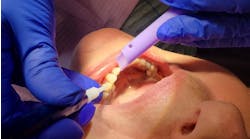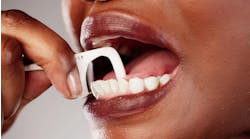A strong oral health component integrated into the nation's public school curriculum could work wonders in improving the oral health of America's children, according to an article in the December issue of AGD Impact, the monthly newsmagazine of the Academy of General Dentistry.
To that end, the Academy has prompted the development of a standards-based oral health curriculum to be incorporated into U.S. primary and secondary schools. The idea is based largely on studies in the United States and Europe that have shown a marked decrease in decay after long-term, standards-based oral health instruction in primary and secondary schools.
According to the 2000 Surgeon General's report, "Oral Health in America," tooth decay is the single most common chronic childhood disease?five times more common than asthma and seven times more common than hay fever. Millions of school hours are lost each year to dental-related diseases. It's a situation the Surgeon General's office has labeled an epidemic, and in response, organized dentistry, government health agencies and other groups have dedicated themselves to breaking down the access barriers that keep these troubling statistics so high.
Since the report's release, the Academy has launched a number of initiatives aimed at correcting this situation. Most recently, the Academy signed a Memorandum of Understanding (MOU) with the U.S. Department of Health and Human Services (HHS), forging a partnership aimed at reaching the public health goals outlined in the landmark guide to improving the health of all Americans, "Healthy People 2010" (HP 2010). The Academy is the only dental organization involved in the MOU program.
One of the main objectives of HP 2010 and the MOU is to improve the public's health literacy. The Academy has long approached this issue through public information campaigns such as SmileLine, Dentalnotes, Fact Sheets, the 1-877-2X-A-YEAR (1-877-292-9327) consumer referral number, and public service announcements. Now, the Academy intends to go to the source, the public education system.
"What better place to educate the public than in the public schools?" asks John S. Grammer, DMD, FAGD, a member of the Academy's Oral Health Literacy Taskforce.
The surgeon general's report also points out a major gap in the nation's oral health literacy?the quality of the public's knowledge about how oral disease works and how to prevent and correct it. Carol Summerhays, DDS, MAGD, agrees this is a problem. "Some of the most educated people I meet are not literate in oral health," says Dr. Summerhays, one of five permanent members of the Academy's newly formed task force. "We see from the surgeon general's report and from our own experience that people don't know much about the importance of oral health and regular dental care. A large percentage of people with dental insurance don't seek dental care. That can only come from a lack of knowledge about oral health's importance to overall health."
While the Academy's oral health curriculum initiative is just getting started, the Academy hopes to have a pilot program in place by the start of the 2003-2004 school year, says Oral Heath Literacy Taskforce Chair Kevin Seidler, DDS, FAGD.





